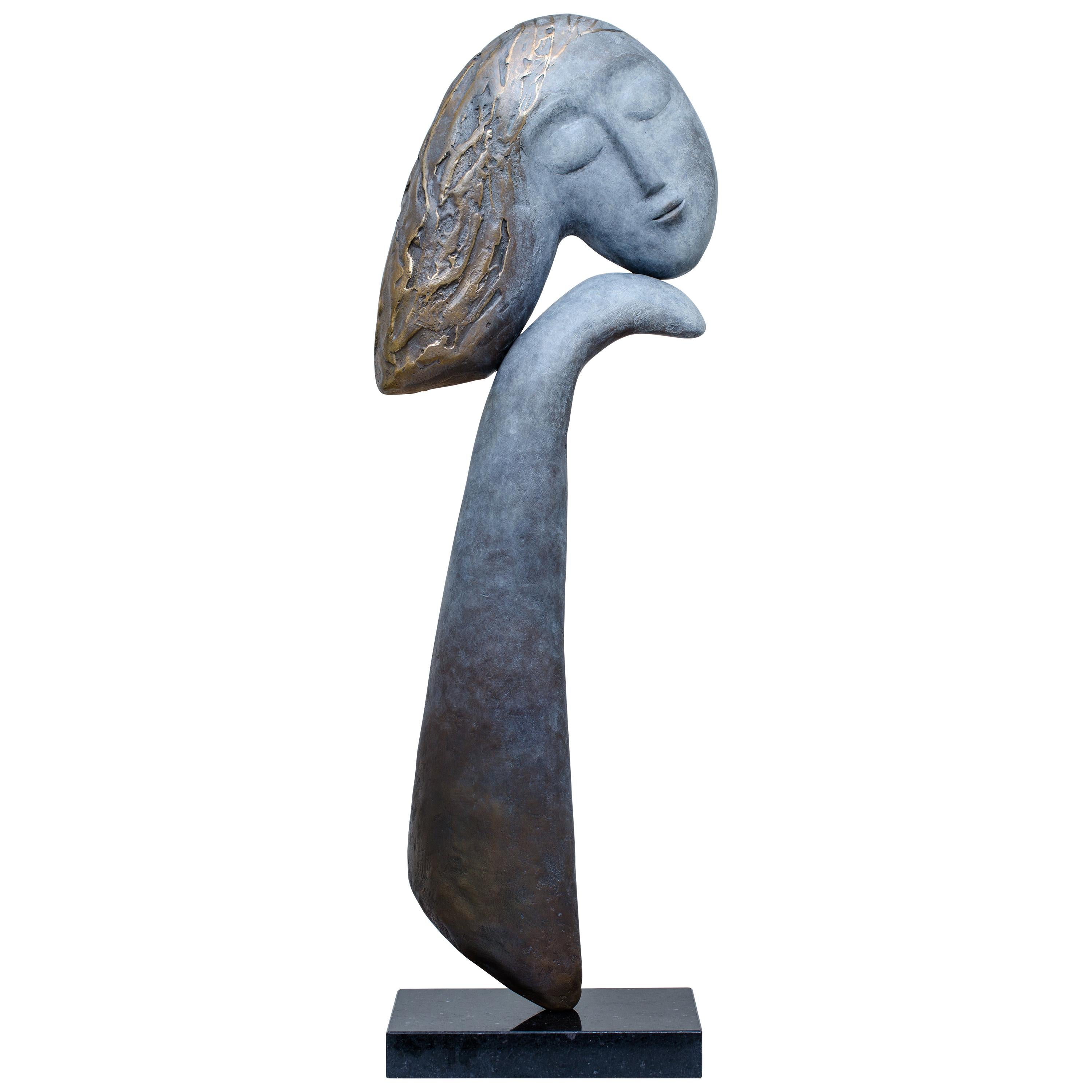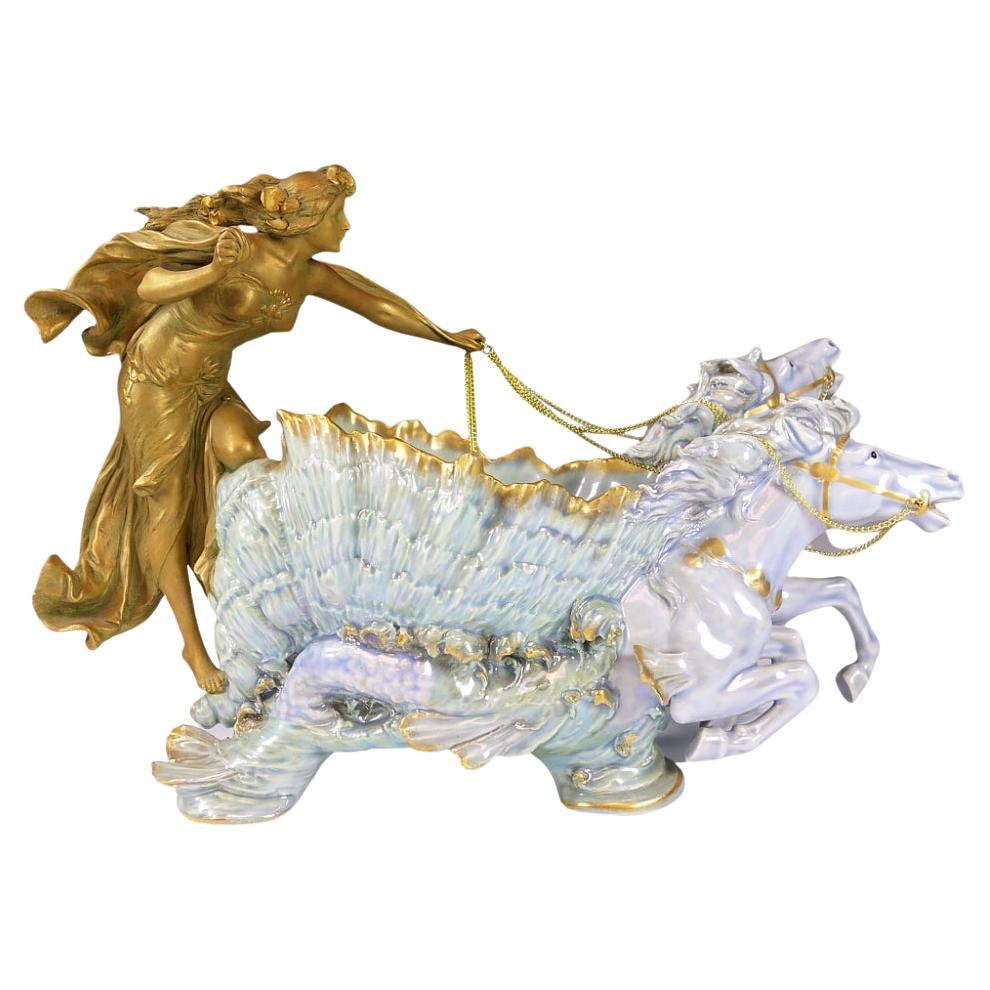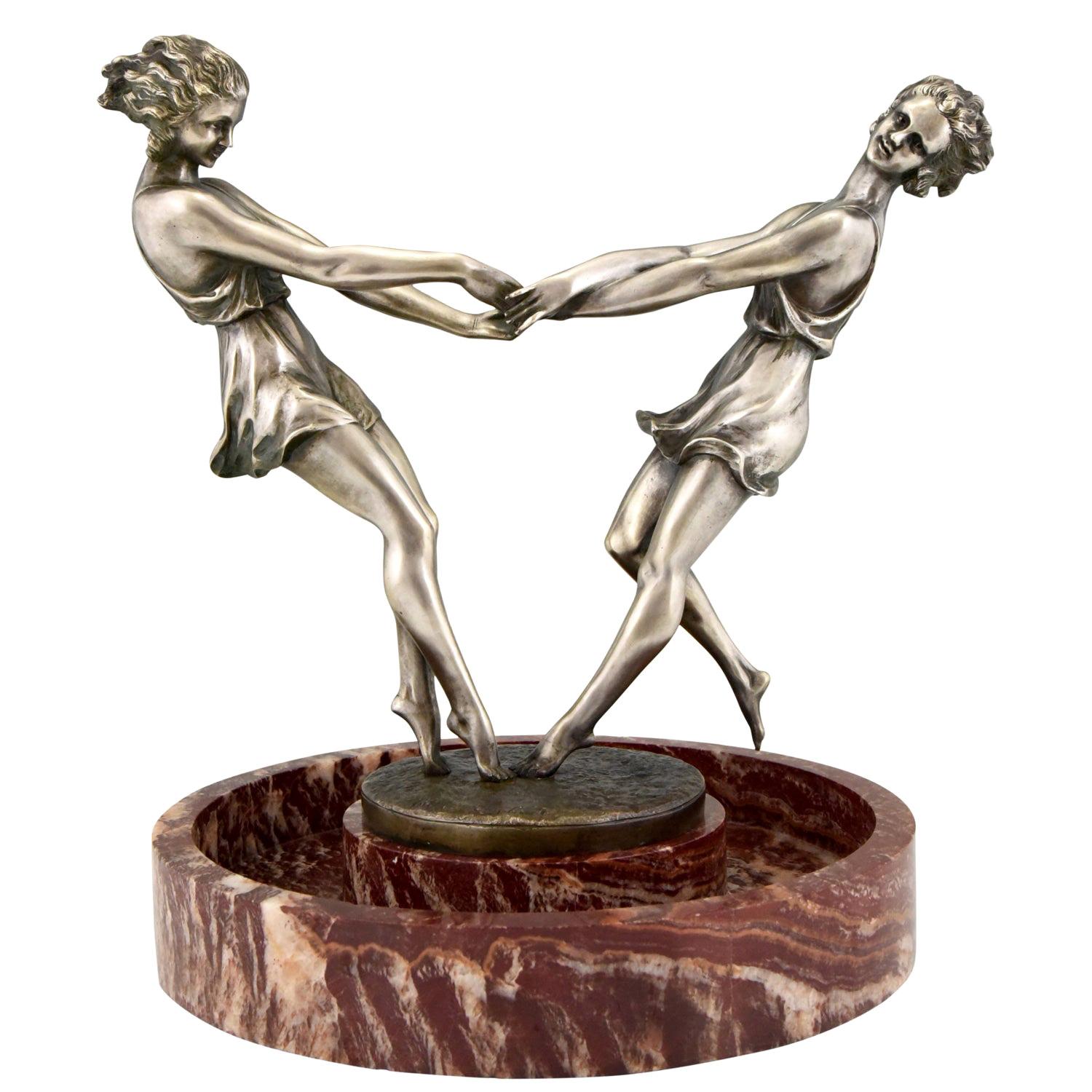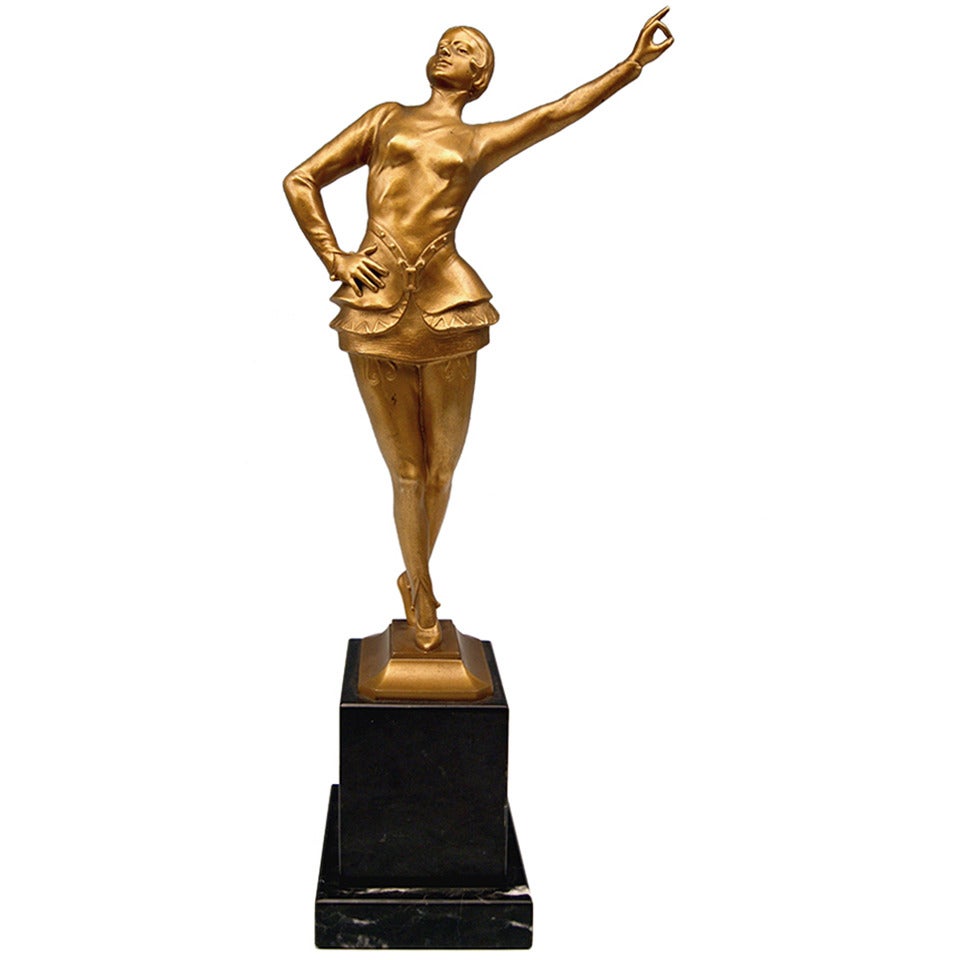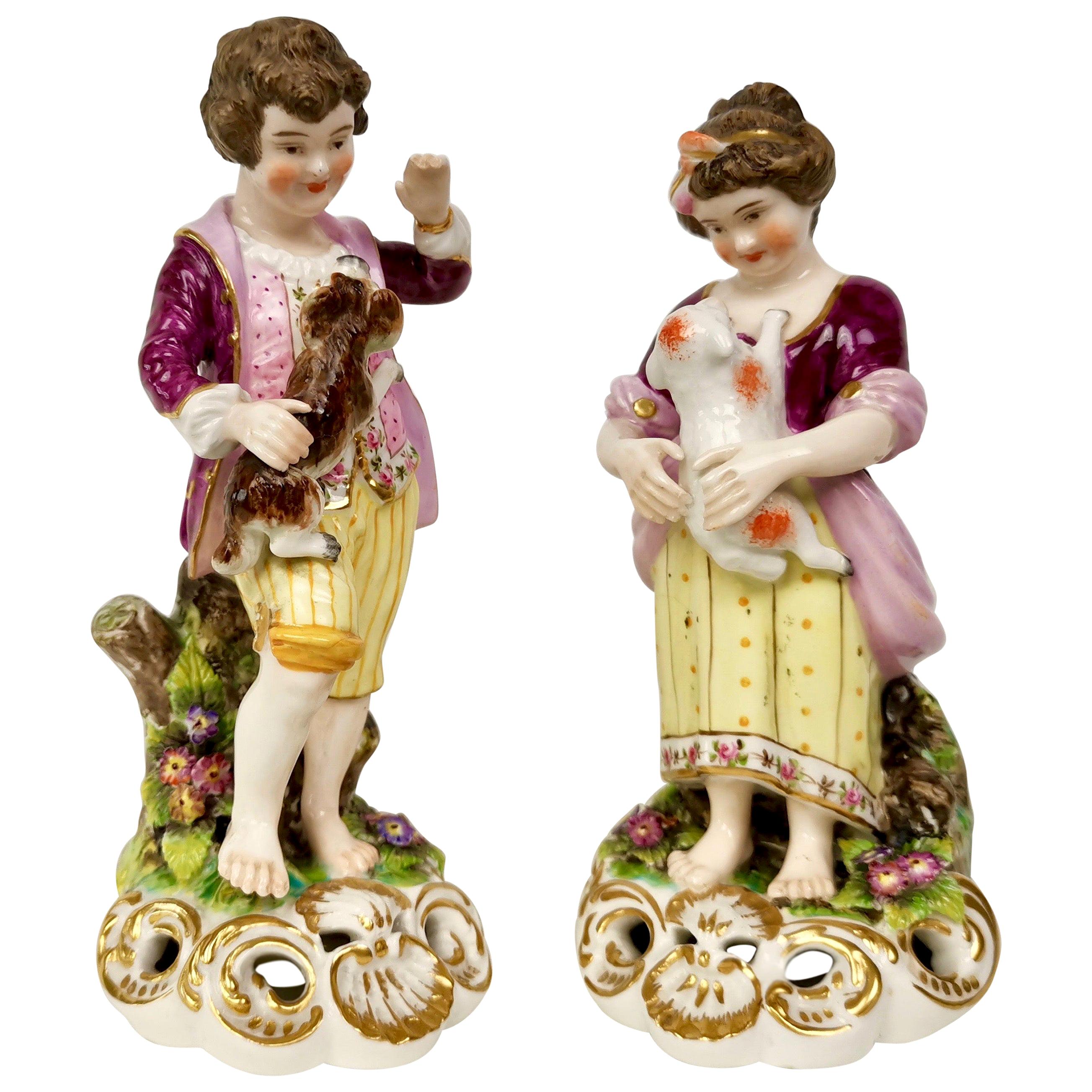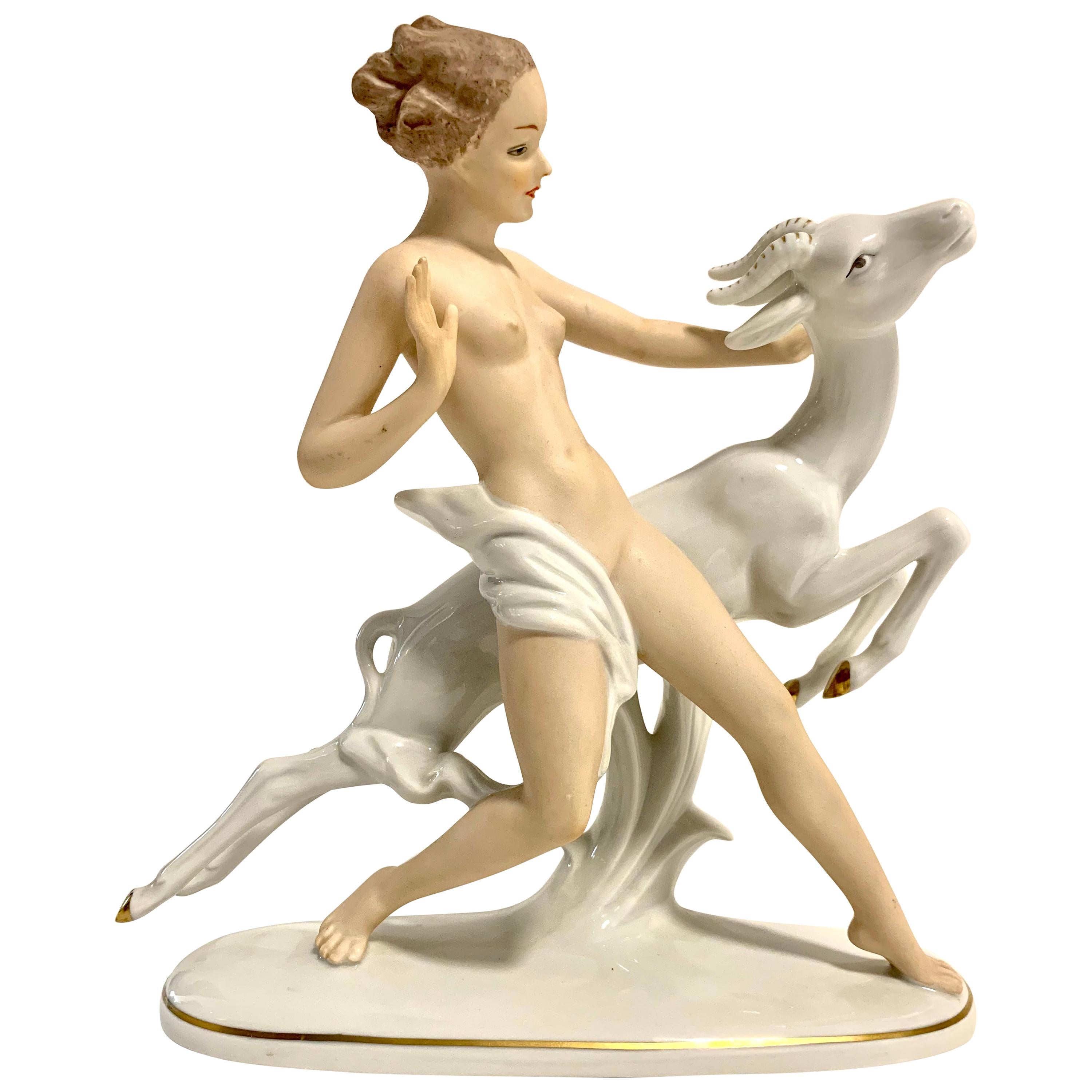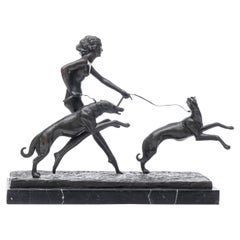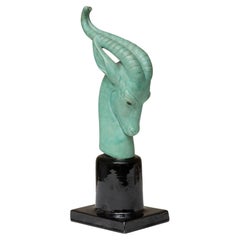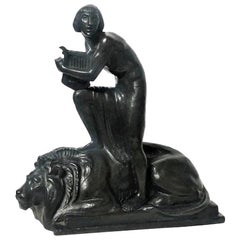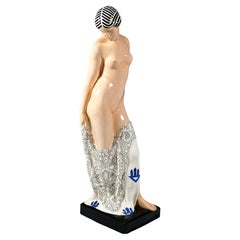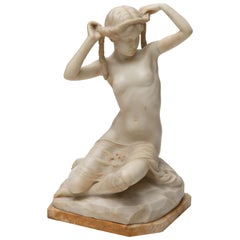
Ernst Seger, Girl Nude with Hair Band, c.1915-1925
View Similar Items
Want more images or videos?
Request additional images or videos from the seller
1 of 7
Ernst Seger, Girl Nude with Hair Band, c.1915-1925
About the Item
- Creator:Ernst Seger (Sculptor)
- Dimensions:Height: 21 in (53.34 cm)Width: 14 in (35.56 cm)Depth: 9.5 in (24.13 cm)
- Materials and Techniques:
- Place of Origin:
- Period:
- Date of Manufacture:circa 1915-1925
- Condition:Wear consistent with age and use.
- Seller Location:Hudson, NY
- Reference Number:1stDibs: LU4840223029302
About the Seller
4.0
Vetted Seller
These experienced sellers undergo a comprehensive evaluation by our team of in-house experts.
Established in 2018
1stDibs seller since 2019
54 sales on 1stDibs
Typical response time: 8 hours
More From This SellerView All
- Antique Bronze Sculpture of Man with PantherLocated in Hudson, NYAntique bronze sculpture of a male figure with a panther.Category
Late 20th Century Neoclassical Figurative Sculptures
MaterialsBronze
- After Marcel Bouraine Art Deco Bronze Sculpture, Woman Running with DogsLocated in Hudson, NYAfter Marcel Bouraine (French, 1886-1948) Art Deco bronze sculpture depicting a nude female figure running with dogs. On a rectangular plinthed black marble base. Signed "M. Bouraine...Category
20th Century French Art Deco Figurative Sculptures
MaterialsBronze
- Paul Millet for Sevres, signed French Art Deco Ceramic Antelope HeadBy Paul MilletLocated in Hudson, NYSevres Green glazed ceramic antelope head mounted on a ceramic pedestalCategory
20th Century French Art Deco Animal Sculptures
MaterialsCeramic
- Signed J. Pinal Wood Carved Sculpture of MatadorBy Jose PinalLocated in Hudson, NYSigned J. Pinal Wood (1913-1983) carved Sculpture of a MatadorCategory
20th Century Figurative Sculptures
MaterialsWood
- Wilhelm Hunt Diederich Style Metal Cut Sculpture of Native American Bowman 1930sBy Wilhelm Hunt DiederichLocated in Hudson, NYTall Wilhelm Hunt Diederich style Metal Cut Sculpture of native American bowman 1930s vintage from the collection of noted collector and respected gallery owner, Kenneth Dukoff of N...Category
20th Century American Figurative Sculptures
MaterialsMetal
- Antique English Sterling Silver Equestrian Sculpture, Dated 1907Located in Hudson, NYAntique English Sterling Silver Equestrian Sculpture dated 1907 multiple markings including London and maker impressed markings Sterling Silver on Wood Plinth, 1907. Marked “GC”. wit...Category
Early 20th Century English Animal Sculptures
MaterialsSilver
You May Also Like
- Ernst Seger, David and Lion, German Art Deco Patinated Bronze Sculpture, c. 1920By Ernst SegerLocated in New York, NYSigned “E. Seger”. Black patina. Dimensions Height: 8 inches (20cm) Width: 7.5 inches (18.75cm) Depth: 8.5 inches (21.25cm) THE BIBLE STORY Samuel 17:34-36 Originally, Saul would not allow David to fight Goliath (17:33). Saul’s reason was simply that Goliath would be stronger than David. David was young and he did not have the experience to fight such a capable enemy as Goliath. David was likely to die, and his death would benefit nobody. Often people wrongly imagine that they are acting in faith (in other words, that they are trusting God). Really, they are acting in a foolish manner, as if the danger is not real. They are not trusting in God, but in their own thoughts, hopes and desires. David’s reply to Saul shows us his attitudes. This reply explains clearly why David had offered to fight Goliath. In other words, it shows how David considered himself able to defeat Goliath. Like many boys and young men in Israel, David had worked as a shepherd. That is, he looked after sheep. He was responsible to look after those sheep in every way. In particular, he had to protect them from wild animals. Lions and bears are some of the fiercest large wild animals. They were common in Israel at the time of the Bible. They are much stronger than a man (see for example 1 Kings 13:24 and 2 Kings 2:24). Only the bravest and strongest men were able to kill a lion (Judges 14:5-6; 2 Samuel 23:20). However, David had killed both a lion and a bear. He had killed animals that were stronger than him. David did not believe that the strongest man would win the fight. David had a close relationship with God; he was trusting God to rescue him (17:37). David was not pretending that there was no danger. However, God’s Holy Spirit was active in David’s life (16:13). By the power of his Holy Spirit, God had given David the faith (trust in God) to fight Goliath. Because David really was trusting God, there was no reason for him to be afraid of Goliath. THE ARTIST Ernst Seger (1865 1939), born in Neurode (Nowa Ruda, now Poland), studied sculpturing from 1884 at the Kunstschule in Breslau under Robert Härtel. From 1886 he worked in the Atelier of Christian Behrens, where he created the Eichendorff-Memorial for the Silezian City of Neisse. From 1893 to 1894 Seger stayed in Paris where he worked in the atelier of Auguste Rodin. However, Seger finally chose a ‘Jugenstill’ and a more ‘naturalistic’ or ‘Neuklassizismus’ style. His sculptures, modelled like the Greek antiques, were later greatly admired by the National Socialists. At the end of 1894 Ernst Seger went back to Berlin, founded his own atelier and created the Kaiser Wilhelm I memorial for the Silesian City of Glatz. In 1897 Seger created the sculpture ‘Jugend’ (‘Youth’), which was displayed at the ‘Große Berliner Kunstausstellung’ in 1898, at the ‘Große Berliner Kunstausstellung’ in 1899, at the ‘Münchener Glaspalast Ausstellung’ in 1899 and at the ‘Münchener Glaspalast Ausstellung’ in 1908. As a sculptor Seger regarded this as his first relevant work, his breakthrough. A copy of the sculpture in bronze, 1.60 metres high, was placed in the ‘Scheitniger Park’ in Breslau (now Wroclaw). In 1898 Segers ‘Diana’, the Roman Goddess of the Hunt, the Moon and Childbirth, was unvealed in Park Szczytnicki, Breslau, Polen (earlier ‘Schneitniger Park’). Until 1945 the sculpture stayed in the Schneitniger Park, Breslau. This part of the park is still called ’Dianagarten’. After the turn of the century the elegant female dancers and nudes by Seger gained great popularity. In 1905 Ernst Seger created -together with the sculptor Bernhard Sehring- the ‘Bismarck Brunnen’ (‘Bismarck Fountain’) in Breslau. This memorial-fountain (which still exists) represents the allegories ‘Kampf’ and ‘Sieg’ (‘Battle and Victory’). Seger’s ‘Verwundete Amazone’ (‘Wounded Amazon’), displayed at the Grosse Münchner Kunstausstellung in the Glaspalast in 1908, was placed in the garden of the ‘Kaufhauses Wertheim’ in Berlin. In the same year he was appointed as a professor. Seger’s marble sculpture ‘Kypris’, created in 1916, was placed in the Alten Nationalgalerie in Berlin. In 1925 the City of Berlin acquired his sculpture ‘Anbetung’ and placed it at the Johannaplatz. ‘Storchenbrunnen’ (‘Stork-fountain’), was placed in 1931 at the Adolf-Scheidt-Platz in Berlin. In 1935 the American newspaper publisher William Randolph Hearst bought Seger’s sleeping ‘Ganymede’. During the Third Reich Ernst Seger was commissioned numerous Hitler busts...Category
Vintage 1920s German Art Deco Figurative Sculptures
MaterialsBronze
- Large Goldscheider Art Déco Figurine 'Helena', Allegory of Beauty, circa 1925By Ernst Seger, Goldscheider Manufactory of ViennaLocated in Vienna, ATVery large and rare Goldscheider Vienna ceramic figurine: Art Déco execution of an Art Nouveau design around 1909: young woman as the personification of beauty, with hair tied at th...Category
Vintage 1920s Austrian Art Nouveau Ceramics
MaterialsCeramic
- 'Girl with golden hair' - One of a kind bronze sculptureBy Rinat DesignLocated in London, GBOne of a kind bronze sculpture titled 'Girl with golden hair' created by Rinat Design and cast in bronze in the lost wax process. The piece depicts a woman's serene face leaning on her arm. The sculpture sits on a black marble base and is finished in beautiful greyish-blue patina. The figure's hair is adorned with 23.7 karat...Category
21st Century and Contemporary British Modern Figurative Sculptures
MaterialsBronze
$1,002 Sale Price20% Off - Porcelain Figure ‘Sitting Girl’ by Ernst Barlach, 1908By Ernst BarlachLocated in Berlin, DEWhite porcelain figure. Young girl sitting on an oval base. Design 1908, by Ernst Barlach (Wedel 1870-1938 Rostock), Germany First original execution. Manufactured by Schwarzburger P...Category
Early 20th Century German Expressionist Figurative Sculptures
MaterialsPorcelain
- Ernst Wahliss Art Nouveau Blue Figural Seahorse Chariot with Nude Maiden 1905By Ernst WahlissLocated in Cathedral City, CAOffering this gorgeous and ultra RARE Ernst Wahliss, Art Nouveau, hand-painted, porcelain figural console vase. This tray features a golden nude maiden driving a turquoise colored sh...Category
Antique Early 1900s Austrian Art Nouveau Decorative Dishes and Vide-Poche
MaterialsPorcelain
- Art Deco Centerpiece with Bronze Sculpture of Dancing Girls Andre Gilbert, 1925By Andre GilbertLocated in Antwerp, BEWhirling, spectacular circular marble centerpiece with a bronze sculpture of two dancing girls holding hands by the French artist Andre Gilbert, circa 19...Category
Vintage 1920s French Art Deco Figurative Sculptures
MaterialsMarble, Bronze
Recently Viewed
View AllMore Ways To Browse
Antique Hames
Plaster Monument
Memorial Rings Antique
Antique Memorial Ring
Antique Memorial Rings
Dior Flower Ring
Kaiser Wilhelm
1950 Christian Dior Brown
Marble Head Child
Art Nouveau Plaster Sculpture
Orange County Used Office Furniture
Kaiser W Germany
Marble Girl Nude
Behrens School
Turn Vienna
Antique French Figurines
French Antique Sculpture Stand
Bronze Boat


